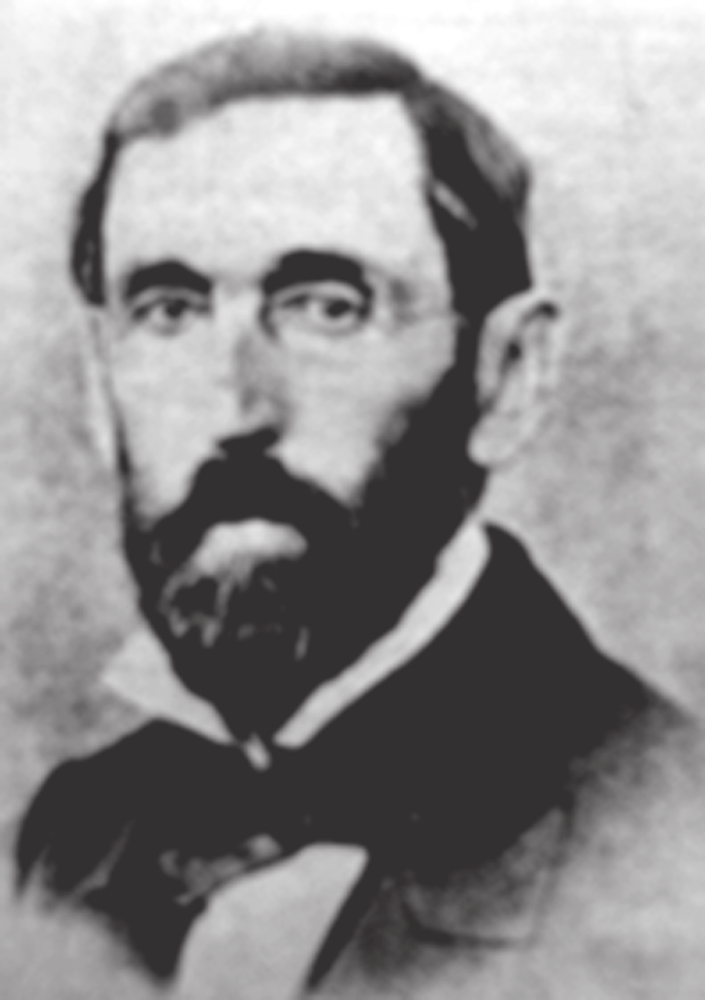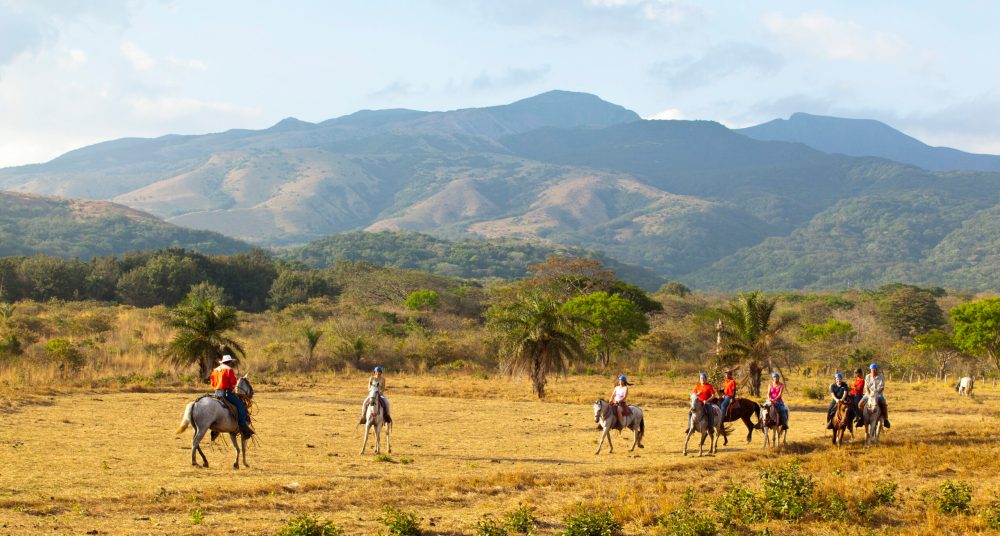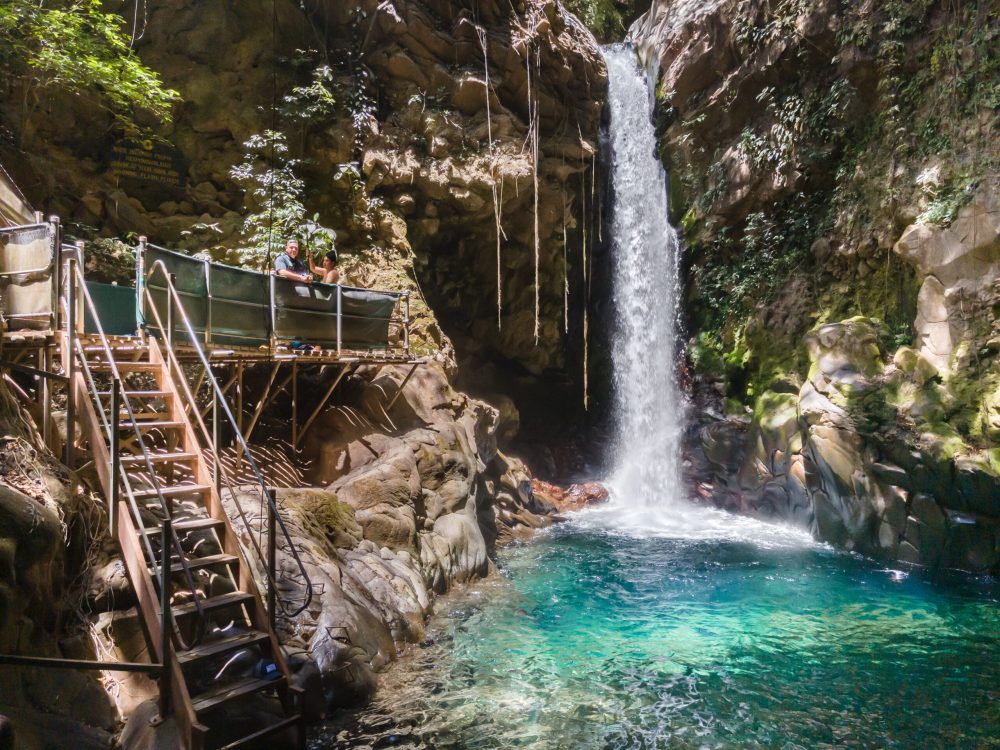The History of Rincón de la Vieja Volcano: A Natural Wonder and Tourism Hub

Burrowed in Costa Rica´s northwestern province of Guanacaste, the Rincón de la Vieja Volcano is a majestic natural landmark with a rich history and significant influence on the region’s economy and tourism. This active volcano, part of the Guanacaste Mountain Range, has fascinated explorers, scientists, and tourists alike with its breathtaking landscapes, geothermal activity, and vibrant biodiversity.
At the foothills of this volcanic giant lies Hotel Hacienda Guachipelín, a historic and eco-friendly lodge that has been welcoming visitors for decades. The hotel is not only a gateway to exploring the wonders of Rincón de la Vieja but also a part of the region’s rich history. Established as a cattle ranch over a century ago, Hacienda Guachipelín has evolved into a leading destination for eco-tourism, seamlessly integrating sustainable practices with its traditional agricultural roots.
Guests at the hotel can experience the perfect blend of adventure and relaxation, with easy access to the volcano’s trails, hot springs, and diverse ecosystems while enjoying a working ranch’s authentic charm and hospitality.

Alexander Von Frantzius. Photo Credit: Alvarado Induni Guillermo
Early Exploration: Alexander von Frantzius and Karl von Seebach
One of the first notable explorers to study Rincón de la Vieja was Alexander von Frantzius, a German naturalist and physician who traveled to Costa Rica in the mid-19th century. Von Frantzius was captivated by the country’s natural beauty and diverse ecosystems.
His explorations and documentation, including a map of the volcano map, added significantly to the scientific understanding of the region’s geology and natural history. Von Frantzius’s work laid the foundation for future studies and highlighted the importance of preserving these unique natural environments.
Following von Frantzius, another prominent German explorer, Karl von Seebach, ventured into the depths of Rincón de la Vieja. Known for his extensive studies in volcanology, von Seebach’s exploration in the late 19th century brought further insights into the area’s volcanic activity and geothermal phenomena. His exploration included the ascent to its summit and the descent, despite the difficulty of the terrain and the weather.
His meticulous observations and recordings provided valuable data that enhanced the scientific community’s understanding of volcanic processes and their impacts on the surrounding ecosystems. Von Seebach’s work underscored the volcano’s significance as a natural laboratory for studying geothermal and volcanic activity.

Karl von Seebach. Photo Credit: Wikipedia
The Geothermal Marvel
Rincón de la Vieja is renowned for its geothermal activity, which includes fumaroles, hot springs, and bubbling mud pots. These features are a testament to the volcano’s active state and a major draw for visitors. The thermal springs, in particular, have become a popular attraction, offering a natural spa experience amidst the lush tropical forest. The mineral-rich waters are believed to have therapeutic properties, making them a sought-after destination for relaxation and wellness.

Take a walk on the wild side at Rincon de la Vieja
A Hub of Biodiversity
The volcano’s slopes are home to diverse flora and fauna, making it a haven for nature enthusiasts and researchers. The Rincón de la Vieja National Park, established to protect this unique ecosystem, encompasses over 34,000 acres of primary and secondary forests, waterfalls, and volcanic formations. Visitors to the park can explore numerous hiking trails that lead to scenic viewpoints, crater lakes, and vibrant wildlife habitats, including howler monkeys, toucans, and tapirs.
Rincón de la Vieja Volcano offers a remarkable level of biodiversity due to its unique combination of geographical, climatic, and ecological factors. The volcano’s diverse range of elevations, from lowland tropical dry forests to higher altitude cloud forests, creates multiple distinct habitats within a relatively small area. This vertical gradient allows for various microclimates and ecosystems, each supporting different plant and animal species. (derougemontmanor.com) As a result, species that thrive in dry, hot conditions can coexist with those that prefer cooler, moist environments.
Additionally, the volcanic activity itself contributes to biodiversity. The geothermal features such as fumaroles, hot springs, and boiling mud pots create unique niches that some specialized organisms can exploit. These geothermal areas can harbor extremophiles, organisms adapted to extreme conditions, which add to the overall biodiversity. The rich volcanic soils are another contributing factor, providing essential nutrients that support lush vegetation growth, which in turn sustains a wide array of wildlife. This combination of varied habitats, unique microclimates, and nutrient-rich soils makes Rincón de la Vieja Volcano a hotspot for biodiversity, attracting researchers and nature enthusiasts alike.

Explore the Hacienda Guachipelin Ranch on horse with the volcano in the background!
Economic Significance: Cattle Ranching and More
The fertile soils on the slopes of Rincón de la Vieja have long supported agricultural activities, particularly cattle ranching. Hacienda Guachipelín, a working cattle ranch and eco-adventure lodge, exemplifies the integration of traditional economic practices with modern tourism. Established over a century ago, Hacienda Guachipelín has evolved from a cattle ranch into a multifaceted operation that includes sustainable tourism, conservation efforts, and cultural preservation.
The ranch offers visitors a glimpse into the traditional ranching lifestyle while providing a base for exploring the natural wonders of the volcano. Guests can participate in horseback riding, canopy tours, and guided hikes, experiencing the beauty and tranquility of the region firsthand. The blend of agricultural heritage and eco-tourism at Hacienda Guachipelín highlights the economic and cultural importance of the Rincón de la Vieja area.

Rincon de la Vieja Volcano is filled with secluded natural treasures like this one!
The Volcano as a Tourist Attraction
Rincón de la Vieja’s unique geological features and scenic beauty have made it a cornerstone of Costa Rica’s eco-tourism industry. The volcano attracts adventurers, nature lovers, and wellness seekers from around the world. The thermal springs, hiking trails, and adventure activities such as zip-lining and river tubing offer a diverse range of experiences for visitors.
Hotel Hacienda Guachipelín plays a crucial role in enhancing the visitor experience by providing comfortable accommodations and various adventure activities right at the doorstep of this natural wonder. The hotel offers exclusive guided tours to the park, ensuring guests have a memorable and educational experience exploring the geothermal marvels and rich biodiversity of Rincón de la Vieja. The convenient location and comprehensive services of Hacienda Guachipelín make it an ideal base for tourists looking to immerse themselves in the unique environment of the volcano.
The development of sustainable tourism around the volcano has provided economic benefits to the local communities while promoting environmental conservation. Efforts to preserve the natural environment ensure that future generations can continue to enjoy the awe-inspiring landscapes and biodiversity of Rincón de la Vieja.
The Rincón de la Vieja Volcano is more than just a geological wonder; it symbolizes Costa Rica’s rich natural heritage and a vital component of the region’s economy. From the early explorations of Alexander von Frantzius to the thriving eco-tourism industry today, the volcano has played a significant role in shaping the history and development of the area. Hacienda Guachipelín stands as a testament to the harmonious coexistence of traditional economic practices and modern sustainable tourism, offering visitors an unforgettable experience at the heart of this natural marvel.
